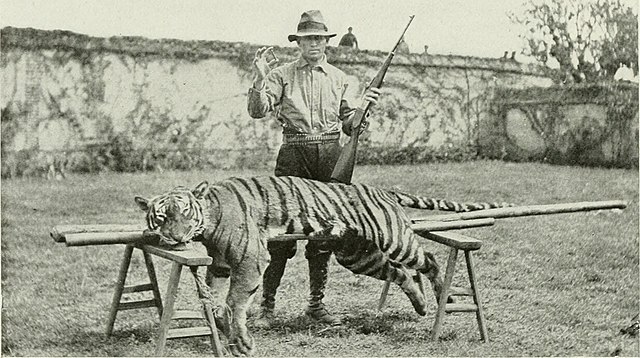The Savage .22 Hi-Power Rifle: History, Legacy, and Performance
- Aug 17
- 3 min read
When rifle enthusiasts talk about classic American cartridges, the Savage .22 Hi-Power often surfaces as a fascinating yet overlooked entry. Introduced in the early 20th century, this round and the rifles chambered for it carved out a unique place in hunting history, blending innovation with controversy over its practical effectiveness.

Origins of the .22 Hi-Power
In 1912, Savage Arms introduced the .22 Hi-Power cartridge for use in their popular Model 1899 lever-action rifle (later known as the Model 99). The cartridge was the brainchild of Charles Newton, a noted firearms designer who sought to push the boundaries of small-caliber, high-velocity hunting rounds.
At a time when most hunters favored big, slow-moving bullets, the .22 Hi-Power was revolutionary: it offered velocity, flat trajectory, and surprising penetration from a small bore.
Cartridge Design
The .22 Hi-Power is based on the .25-35 Winchester case necked down to accept a 5.77 mm (.227 inch) bullet (not the modern .224 used today). This unusual caliber choice made the round somewhat proprietary and eventually limited its long-term popularity.
Key Specifications:
Bullet diameter: 5.77 mm
Case type: Rimmed, bottleneck
Case length: 51.9 mm
Overall length: 65.3 mm
Bullet weight (factory): 4.5 g (70 grains, soft-point or FMJ)
Muzzle velocity: ~850–880 m/s
Muzzle energy: ~1,625 J
These numbers were eye-opening for 1912 — in fact, Savage marketed the cartridge heavily as a “world-wide big-game solution”, claiming it could humanely take everything from deer to tigers.
The Savage Model 1899 Rifle
The Savage Model 1899 (later Model 99) chambered in .22 Hi-Power is where the cartridge really came alive. The rifle was known for its rotary magazine, hammerless design, and sleek lever action, making it advanced for its time.
Hunters appreciated the rifle’s:
Light weight and portability
Fast follow-up shots thanks to lever action
Accuracy at medium ranges
Combined with the high-speed .22 Hi-Power round, it offered an entirely new shooting experience compared to the big-bore lever guns of the era.
Hunting Legacy
Savage’s marketing machine pushed the .22 Hi-Power as an all-purpose hunting cartridge. Early advertisements boasted of its use on:
Deer and antelope in North America
Boar and red deer in Europe
Even tigers in India (legendary hunter W.D.M. Bell reportedly used it, though with mixed opinions).
While it performed admirably on deer-sized game, many hunters found it lacking penetration for large or dangerous animals. Over time, the round earned a reputation as effective for medium game but marginal for anything bigger.
Why It Faded
By the 1930s, the .22 Hi-Power began losing ground:
Its 5.77 mm bullet diameter was non-standard, limiting bullet options.
Newer 5.56 mm (.224) cartridges (.220 Swift, .222 Remington, later .223 Remington) offered higher velocity, flatter trajectory, and more flexibility.
The push for standardization in ammunition manufacturing left the .22 Hi-Power behind.
Today, original rifles survive mostly as collector’s pieces, and factory ammo is rare, with occasional specialty runs from European manufacturers like Prvi Partizan (PPU).
Modern Ammunition Availability
While discontinued by most American ammo makers, some companies still produce limited runs:
Prvi Partizan (PPU): 4.5 g (70-grain) soft point
Norma (historic production): Occasional loads, collectible now
Handloading: Many enthusiasts resize .25-35 Winchester brass and use custom 5.77 mm bullets (though some adapt 5.56 mm bullets with resizing or bore tolerances).
Practical Range (in meters)
Effective hunting range: ~180–230 m on deer-sized game
Target shooting range: 270 m+ possible, though bullet drop becomes significant
Best use today: Collectors, historical shooting, and medium-game hunting for enthusiasts who enjoy vintage rifles.
Legacy of the .22 Hi-Power
Although it never became the universal big-game round Savage once promised, the .22 Hi-Power left a lasting mark on firearms history:
It was one of the first commercial high-velocity small-caliber rounds.
It influenced later cartridge design, helping pave the way for modern .22 centerfires.
Rifles chambered in it — especially early Savage 1899/99s — remain sought after by collectors.
Today, owning and shooting a .22 Hi-Power rifle is less about practicality and more about preserving a fascinating chapter in ballistics history.
The Savage .22 Hi-Power rifle and cartridge were bold innovations of their time — fast, flat-shooting, and ahead of their era, yet ultimately overtaken by standardization and technological progress. For those lucky enough to own one, it’s more than just a rifle; it’s a piece of living firearms heritage.















